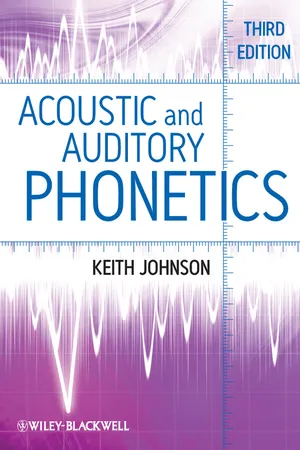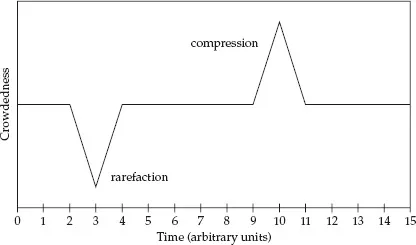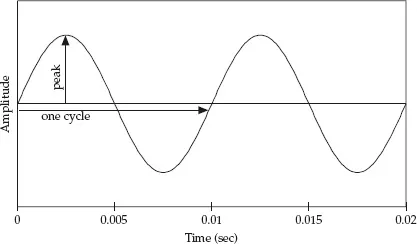
- English
- ePUB (mobile friendly)
- Available on iOS & Android
eBook - ePub
Acoustic and Auditory Phonetics
About this book
Fully revised and expanded, the third edition of Acoustic and Auditory Phonetics maintains a balance of accessibility and scholarly rigor to provide students with a complete introduction to the physics of speech.
- Newly updated to reflect the latest advances in the field
- Features a balanced and student-friendly approach to speech, with engaging side-bars on related topics
- Includes suggested readings and exercises designed to review and expand upon the material in each chapter, complete with selected answers
- Presents a new chapter on speech perception that addresses theoretical issues as well as practical concerns
Frequently asked questions
Yes, you can cancel anytime from the Subscription tab in your account settings on the Perlego website. Your subscription will stay active until the end of your current billing period. Learn how to cancel your subscription.
No, books cannot be downloaded as external files, such as PDFs, for use outside of Perlego. However, you can download books within the Perlego app for offline reading on mobile or tablet. Learn more here.
Perlego offers two plans: Essential and Complete
- Essential is ideal for learners and professionals who enjoy exploring a wide range of subjects. Access the Essential Library with 800,000+ trusted titles and best-sellers across business, personal growth, and the humanities. Includes unlimited reading time and Standard Read Aloud voice.
- Complete: Perfect for advanced learners and researchers needing full, unrestricted access. Unlock 1.4M+ books across hundreds of subjects, including academic and specialized titles. The Complete Plan also includes advanced features like Premium Read Aloud and Research Assistant.
We are an online textbook subscription service, where you can get access to an entire online library for less than the price of a single book per month. With over 1 million books across 1000+ topics, we’ve got you covered! Learn more here.
Look out for the read-aloud symbol on your next book to see if you can listen to it. The read-aloud tool reads text aloud for you, highlighting the text as it is being read. You can pause it, speed it up and slow it down. Learn more here.
Yes! You can use the Perlego app on both iOS or Android devices to read anytime, anywhere — even offline. Perfect for commutes or when you’re on the go.
Please note we cannot support devices running on iOS 13 and Android 7 or earlier. Learn more about using the app.
Please note we cannot support devices running on iOS 13 and Android 7 or earlier. Learn more about using the app.
Yes, you can access Acoustic and Auditory Phonetics by Keith Johnson in PDF and/or ePUB format, as well as other popular books in Languages & Linguistics & Linguistics. We have over one million books available in our catalogue for you to explore.
Information
Part I
Fundamentals
Chapter 1
Basic Acoustics and Acoustic Filters
1.1 The Sensation of Sound
Several types of events in the world produce the sensation of sound. Examples include doors slamming, plucking a violin string, wind whistling around a corner, and human speech. All these examples, and any others we could think of, involve movement of some sort. And these movements cause pressure fluctuations in the surrounding air (or some other acoustic medium). When pressure fluctuations reach the eardrum, they cause it to move, and the auditory system translates these movements into neural impulses which we experience as sound. Thus, sound is produced when pressure fluctuations impinge upon the eardrum. An acoustic waveform is a record of sound-producing pressure fluctuations over time. (Ladefoged, 1996, Fry, 1979, and Stevens, 1999, provide more detailed discussions of the topics covered in this chapter.)
Acoustic medium
Normally the pressure fluctuations that are heard as sound are produced in air, but it is also possible for sound to travel through other acoustic media. So, for instance, when you are swimming under water, it is possible to hear muffled shouts of the people above the water, and to hear noise as you blow bubbles in the water. Similarly, gases other than air can transmit pressure fluctuations that cause sound. For example, when you speak after inhaling helium from a balloon, the sound of your voice travels through the helium, making it sound different from normal. These examples illustrate that sound properties depend to a certain extent on the acoustic medium, on how quickly pressure fluctuations travel through the medium, and how resistant the medium is to such fluctuations.
1.2 The Propagation of Sound
Pressure fluctuations impinging on the eardrum produce the sensation of sound, but sound can travel across relatively long distances. This is because a sound produced at one place sets up a sound wave that travels through the acoustic medium. A sound wave is a traveling pressure fluctuation that propagates through any medium that is elastic enough to allow molecules to crowd together and move apart. The wave in a lake after you throw in a stone is an example. The impact of the stone is transmitted over a relatively large distance. The water particles don’t travel; the pressure fluctuation does.
A line of people waiting to get into a movie is a useful analogy for a sound wave. When the person at the front of the line moves, a “vacuum” is created between the first person and the next person in the line (the gap between them is increased), so the second person steps forward. Now there is a vacuum between person two and person three, so person three steps forward. Eventually, the last person in the line gets to move; the last person is affected by a movement that occurred at the front of the line, because the pressure fluctuation (the gap in the line) traveled, even though each person in the line moved very little. The analogy is flawed, because in most lines you get to move to the front eventually. For this to be a proper analogy for sound propagation, we would have to imagine that the first person is shoved back into the second person and that this crowding or increase of pressure (like the vacuum) is transmitted down the line.
Figure 1.2 shows a pressure waveform at the location indicated by the asterisk in figure 1.1. The horizontal axis shows the passage of time, the vertical axis the degree of crowdedness (which in a sound wave corresponds to air pressure). At time 3 there is a sudden drop in crowdedness because person two stepped up and left a gap in the line. At time 4 normal crowdedness is restored when person 3 steps up to fill the gap left by person 2. At time 10 there is a sudden increase in crowdedness as person 2 steps back and bumps into person 3. The graph in figure 1.2 is a way of representing the traveling rarefaction and compression waves shown in figure 1.1. Given a uniform acoustic medium, we could reconstruct figure 1.1 from figure 1.2 (though note the discussion in the next paragraph on sound energy dissipation). Graphs like the one shown in figure 1.2 are more typical in acoustic phonetics, because this is the type of view of a sound wave that is produced by a microphone – it shows amplitude fluctuations as they travel past a particular point in space.
An analogy for sound propagation
Figure 1.1 shows seven people (represented by numbers) standing in line to see a show. At time 2 the first person steps forward and leaves a gap in the line. So person two steps forward at time 3, leaving a gap between the second and third persons in the line. The gap travels back through the line until time 8, when everyone in the line has moved forward one step. At time 9 the first person in the line is shoved back into place in the line, bumping into person two (this is symbolized by an X). Naturally enough, person two moves out of person one’s way at time 10, and bumps into person three. Just as the gap traveled back through the line, now the collision travels back through the line, until at time 15 everyone is back at their starting points.
We can translate the terms of the analogy to sound propagation. The people standing in line correspond to air molecules, the group of them corresponding to an acoustic medium. The excess gap between successive people is negative air pressure, or rarefaction, and collisions correspond to positive air pressure, or compression. Zero air pressure (which in sound propagation is the atmospheric pressure) is the normal, or preferred, distance between the people standing in line. The initial movement of person one corresponds to the movement of air particles adjacent to one of the tines of a tuning fork (for example) as the tine moves away from the particle. The movement of the first person at time 9 corresponds to the opposite movement of the tuning fork’s tine.
Figure 1.1 Wave motion in a line of seven people waiting to get into a show. Time is shown across the top of the graph running from earlier (time 1) to later (time 15) in arbitrary units.

Figure 1.2 A pressure waveform of the wave motion shown in figure 1.1. Time is again shown on the horizontal axis. The vertical axis shows the distance between people.

Sound waves lose energy as they travel through air (or any other acoustic medium), because it takes energy to move the molecules. Perhaps you have noticed a similar phenomenon when you stand in a long line. If the first person steps forward, and then back, only a few people at the front of the line may be affected, because people further down the line have inertia; they will tolerate some change in pressure (distance between people) before they actually move in response to the change. Thus the disturbance at the front of the line may not have any effect on the people at the end of a long line. Also, people tend to fidget, so the difference between movement propagated down the line and inherent fidgeting (the signal-to-noise ratio) may be difficult to detect if the movement is small. The rate of sound dissipation in air is different from the dissipation of a movement in a line, because sound radiates in three dimensions from the sound source (in a sphere). This means that the number of air molecules being moved by the sound wave greatly increases as the wave radiates from the sound source. Thus the amount of energy available to move each molecule on the surface of the sphere decreases as the wave expands out from the sound source; consequently the amount of particle movement decreases as a function of the distance from the sound source (by a power of 3). That is why singers in heavy metal bands put the microphone right up to their lips. They would be drowned out by the general din otherwise. It is also why you should position the microphone close to the speaker’s mouth when you record a sample of speech (although it is important to keep the microphone to the side of the speaker’s lips, to avoid the blowing noises in [p]’s, etc.).
1.3 Types of Sounds
There are two types of sounds: periodic and aperiodic. Periodic sounds have a pattern that repeats at regular intervals. They come in two types: simple and complex.
1.3.1 Simple periodic waves
Simple periodic waves are also called sine waves: they result from simple harmonic motion, such as the swing of a pendulum. The only time we humans get close to producing simple periodic waves in speech is when we’re very young. Children’s vocal cord vibration comes close to being sinusoidal, and usually women’s vocal cord vibration is more sinusoidal than men’s. Despite the fact that simple periodic waves rarely occur in speech, they are important, because more complex sounds can be described as combinations of sine waves. In order to define a sine wave, one needs to know just three properties. These are illustrated in figures 1.3–1.4.
Figure 1.3 A 100 Hz sine wave with the duration of one cycle (the period) and the peak amplitude labeled.

Figure 1.4 Two sine waves with identical frequency and amplitude, but 90° out of phase.

The first is frequency: the number of times the sinusoidal pattern repeats per unit time (on the horizontal axis). Each repetition of the pattern is called a cycle, and the duration of a cycle is its period. Frequency can be expressed as cycles per second, which, by convention, is called hertz (and abbreviated Hz). So to get the frequency of a sine wave in Hz (cycles per second), you divide one second by the period (the duration of one cycle). That is, frequency in Hz equals 1/T, where T is the period in seconds. For example, the sine wave in figure 1.3 completes one cycle in 0.01 seconds. The number of cycles this wave could complete in one second is 100 (that is, one second divided by the amount of time each cycle takes in seconds, or 1/0.01 = 100). So, this waveform has a frequency of 100 cycles per second (100 Hz).
The second property of a simple periodic wave is its amplitude: the peak deviation of a pressure fluctuation from normal, atmospheric pressure. In a sound pressure waveform the amplitude of the wave is represented on the vertical axis.
The third property of sine waves is their...
Table of contents
- Cover page
- Contents
- Title
- Copyright
- Acknowledgments
- Introduction
- Part I: Fundamentals
- Part II: Speech Analysis
- References
- Answers to Selected Short-answer Questions
- Index